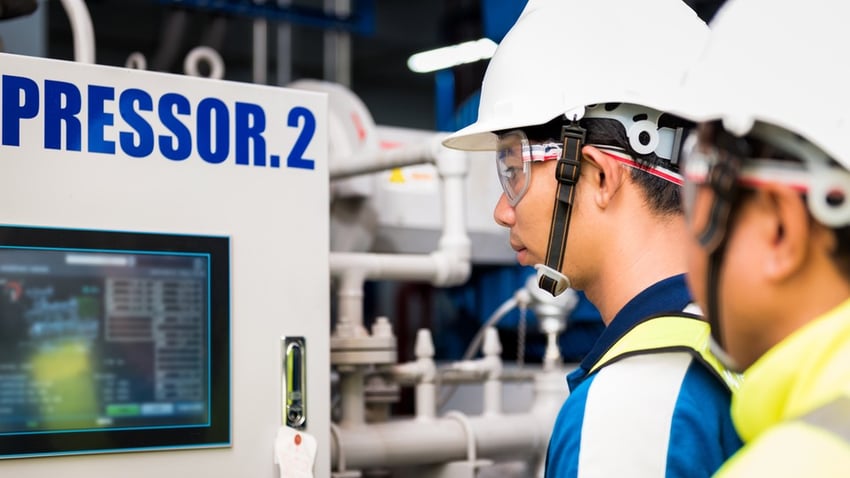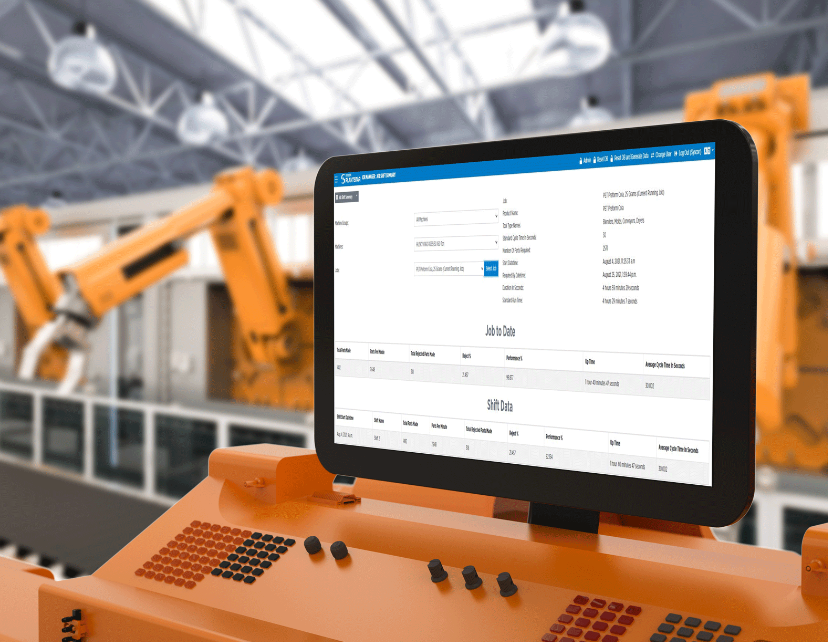
Competition among manufacturers is intense. Suppliers have two items to examine when they want to improve their operations: their machines and their workers. Increasingly technology is empowering suppliers to enhance the efficiency of each. For instance, a Manufacturing Execution System (MES) provides them with a way to consolidate dispersed information and oversee their manufacturing operations more intelligently.
MES software helps managers and workers alike by consolidating data from various machines and production processes into one user-friendly interface. Operators can then use this information to optimize the performance of their machines. In addition, MES can help identify and troubleshoot problems in the production process, improving plant efficiency. The use of MES software can result in significant improvements in plant efficiency. The benefits of MES software are clear. By empowering employees with information and improving plant efficiency, manufacturers can stay competitive and improve their bottom line.
1. Gain Real-Time Visibility
Historically, manufacturers lacked the ability to understand what was happening on the manufacturing floor and in the supply chain at any moment. As a result, they managed from behind, reacting to crises, rather than ahead, preventing problems.
New technology provides them with much-needed visibility. The Internet of Things instruments machinery and collects performance metrics. For example, PlantStar tracks Cycle Time, Shot Size, Injection Pressure, Hold Pressure, Hold Time, Cushion, and Position. Production process data includes Live OEE, Machine and Tool Cycles, Good and Bad Part Counts, Up Time and Down Time, and Reject, Assist, Downtime Events. Other features include Tool life tracking which includes access to Tool Maintenance, Material usage reporting, Material forecasting, Material Lot Tracking, Text Voice Paging, Labor Tracking, Label Printing.
Such data is automatically uploaded to the cloud. Network connections move it in a flash, so personnel understands what is occurring in real-time. They then can make adjustments and improve manufacturing efficiency. If demand is up, they add materials and production capacity. If a problem has arisen, they ratchet the manufacturing line down. Data can be sliced and diced on how manufacturers seem fit. Reporting filter capabilities with specific shift, machine, and job data.
2. Lower Downtime
Once manufacturers invest in their plants, they want them to run as much as possible. Yet, problems arise, and these systems go offline, often at a significant cost to the supplier. In fact, equipment failures are responsible for 42% of all plant floor downtime and cost U.S. manufacturers $50 billion annually in lost revenue.
Downtime has been another area where suppliers lacked real-time insights because of the way legacy systems were designed. PlantStar enables customers to track downtime more easily and consistently by providing suppliers with real-time data. Factory managers examine reports that illustrate the top causes of downtime in their plants as well as potential downtime looming from items, such as equipment wear and tear.
Forewarned, they take steps to avert the problem. Consequently, they minimize downtime and boost Overall Equipment Effectiveness (OEE), which tracks three manufacturing metrics: Availability, Efficiency, and Quality. SYSCON customers realized a 30% increase in OEE, and every 1% improvement in OEE is worth approximately $50k per year.
3. Move from Preventative to Predictive Maintenance
Preventive maintenance is a common practice among manufacturers. In this case, device tuning occurs on a set schedule, one based on either time intervals or equipment trigger points, such as a robot turning a bolt for the 5,000th time. The objective is tuning the device before it fails and lengthening its lifecycle. However, the results have not been promising. Boeing found that 85% of all equipment failed randomly no matter what preventive maintenance measures were applied.
Predictive maintenance takes a different tact. Here, suppliers gather performance information from each device and build a historical data model. Artificial intelligence and machine learning algorithms examine data points, like vibration analysis, oil analysis, and thermal imaging, to determine where the device is in its lifecycle and recommend actions that lengthen machinery life and reduce downtime.
4. Improve Training
No doubt that manufacturing advances at a rapid pace today, and it seems to speed up more daily. As a result, many workers struggle, in areas, like understanding how new system enhancements impact their work. The changes have been coming so quickly that many workers feel pressure, which raises stress, diminishes productivity and increases turnover — in fact, proper training is one of three key factors in attracting and retaining employees.
The pandemic forced suppliers to alter their training programs. Social-distancing rewrote training rules, and a rapid move from legacy, classroom-based classes was usurped by remote, online, skill-building training modules.
A strong MES solution provides employees with flexible, online training options, which deliver convenience. Employees access e-learning modules via desktop, laptop, or smart devices. Trainers no longer have to travel to hold classes, so more are held. With virtual reality and augmented reality tools, employers offer virtual walk-throughs and task simulations, so employees have a practical rather than theoretical understanding of their tasks. Employees gain the skills needed to be successful now and in the coming years. Employers benefit because they reduce costs. Contracted trainers no longer require costly travel expenses to hold the classes. With SYSCON PlantStar MES, a job setup sheets feature allows manufacturers to create training documents, part images, process standards, and even videos.
5. Increase Worker Efficiency
No doubt the manufacturers need to find ways to do more with less. Not only is competition intense and ever-increasing but also these companies are having trouble finding skilled employees. More individuals are leaving the field than entering it, a phenomenon exacerbated by the pandemic. Deloitte and The Manufacturing Institute expect the U.S. manufacturing worker shortage during the next decade to reach its highest levels ever recorded, with more than 2 million unfilled jobs during 2015–2025.
Managing supply chains and manufacturing floors is a complex task, one that increasingly relies on timely information. With legacy systems, plant personnel had to collect information from documents, spreadsheets, and sometimes even sticky notes to understand what was happening on the shop floor. Many companies are still collecting data manually which only impacts higher labor costs. With an MES, they not only consolidate the information but also automate select functions, offloading the data collection from staff to machines. As a result, they spend more time brainstorming and improving operations and less on busywork. Manufacturers do more with less personnel.
Manufacturers are under intense pressure to improve their manufacturing processes. Deploying an MES enables them to not only improve device performance but also boost employee productivity. Consequently, it is becoming the foundation for successful plant performance.




